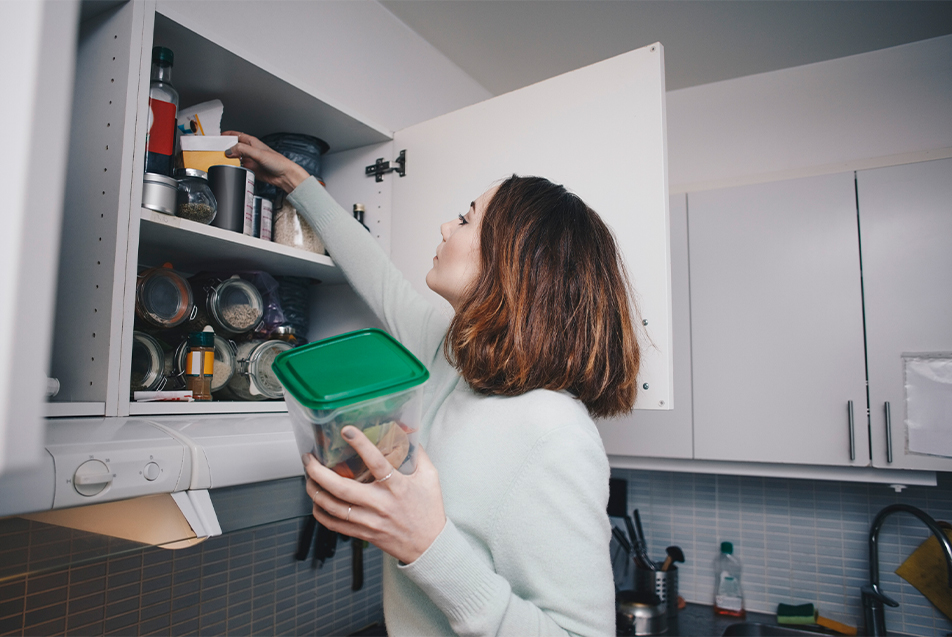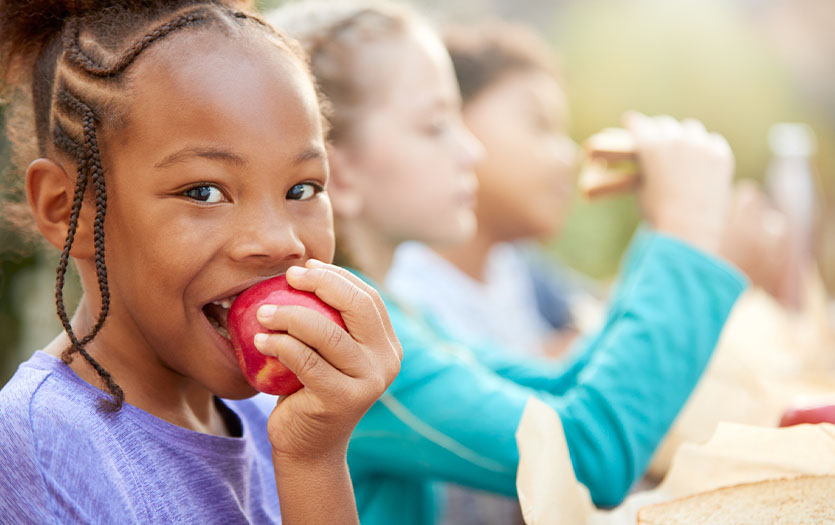
This post was written by Hannah Bercot, RDN, CD, community outreach dietitian, Parkview Community Greenhouse and Learning Kitchen.
The COVID-19 pandemic has stressed our food system, from shortages on shelf-stable goods and meat products to surpluses of fresh produce that would typically supply the restaurant industry. With more and more families working from home and consuming more meals in their own kitchens, we’re seeing our pantries depleted more quickly. While trips to the grocery store are crucial, we must keep an open mind when creating our shopping lists. For example, have you tried to bake bread lately? Could you find any yeast? The bottom line, we can’t expect to find everything on our list in a time like this. Flexibility is key.
Stock up
Try stocking up on canned, dry and frozen goods when they are available. When only fresh, perishable goods are in stores, then you can certainly turn to The National Center for Home Food Preservation for the USDA Complete Guide to Home Canning and other resources for freezing and drying. It’s also a good idea to keep the shelf life of perishable produce in mind. Check out this helpful storage guide from Purdue Extension or this alphabetical list on the storage of fresh produce from The University of Tennessee Extension. Also, it’s always a good idea to buy fresh produce with varying shelf lives. This way you can get a variety of fruits and vegetables, some for immediate use and some for storing.
Culinary creativity
Now is the time to get creative and think of different ways to use what you have on hand. A balanced meal should include 4-5 food groups including whole grains, protein, vegetables, fruits and calcium. If you or your family don’t consume dairy or dairy replacements, then be sure to get your calcium from the other four food groups. Don’t be afraid to branch out and try foods that you have never tried before. The importance of leaving your comfort zone is simple. The foods you’re used to eating may not be available when you’re at the store, which is why you should try to stock up on different options within these food groups. This way you can throw together a balanced meal, with what you have on hand, in no time.
One-pot wonders
One-pot meals are wonderful! They are balanced, efficient and easy to store when it comes to leftovers. Unsure on how to put together a one-pot meal? Just follow these simple steps:
- Step 1: Pick a whole grain. Brown rice, black rice, barley, quinoa, millet, polenta, grits, whole grain bread or tortillas are all great choices.
- Step 2: Pick a protein. Try beans, peas, legumes, chickpeas, lentils, tofu or frozen edamame (soybeans). Soy is a good source of calcium if you’re not including the dairy group. Plant foods are a great choice because they will provide a much-needed boost to your immune system. Also, fish and poultry should be used sparingly. There is a shortage of these items so prices could be high with availability being low.
- Step 3: Use the vegetables that you have. Many veggies like green beans, corn, peppers, broccoli, cauliflower, onions, potatoes, mushrooms, tomatoes, cabbage and leafy greens are easy to add to a quick stir-fry or soup. You could also consider adding precut coleslaw, broccoli slaw mixes, frozen or canned mixed vegetables, and even leftovers from other meals.
- Step 4: Spice things up! Herbs and spices can add depth and flavor to any dish. Try using some of the following spices in your next meal. Mexican spices include chili powder, cumin, garlic, or fajita seasoning. Some great Italian seasonings are oregano, thyme, garlic and basil. And some delicious Asian seasonings include sesame, turmeric, cinnamon, ginger, curry and chili.
Accounting for allergies
Another item to consider, some families might be feeding those with food dislikes or allergies. In which case, one-pot meals might not work for everyone. If that’s the case, it’s a good idea to have options available for everyone. Buddha bowls are a fun way to feed the household without too much fuss because each bowl can be unique and tailored to each person’s liking. Stop by Forks Over Knives for the basics of making a buddha bowl and some delicious recipes too.
If you’re still feeling intimidated with what’s in the cupboard, don’t worry. Try visiting SuperCook to find recipes based on ingredients you already have in your home.
Helpful resources
The National Center for Home Food Preservation



